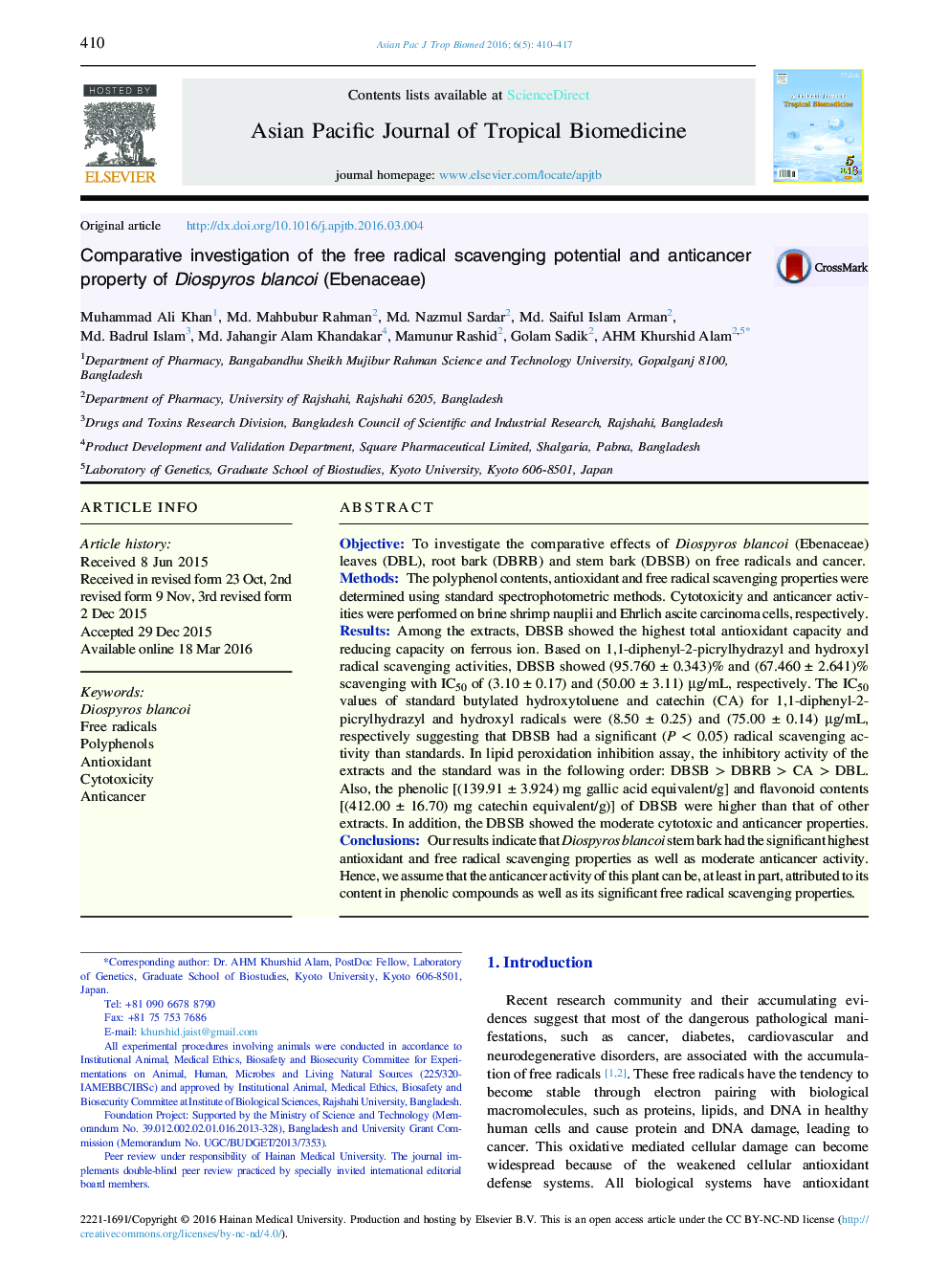| کد مقاله | کد نشریه | سال انتشار | مقاله انگلیسی | نسخه تمام متن |
|---|---|---|---|---|
| 2032532 | 1542865 | 2016 | 8 صفحه PDF | دانلود رایگان |

ObjectiveTo investigate the comparative effects of Diospyros blancoi (Ebenaceae) leaves (DBL), root bark (DBRB) and stem bark (DBSB) on free radicals and cancer.MethodsThe polyphenol contents, antioxidant and free radical scavenging properties were determined using standard spectrophotometric methods. Cytotoxicity and anticancer activities were performed on brine shrimp nauplii and Ehrlich ascite carcinoma cells, respectively.ResultsAmong the extracts, DBSB showed the highest total antioxidant capacity and reducing capacity on ferrous ion. Based on 1,1-diphenyl-2-picrylhydrazyl and hydroxyl radical scavenging activities, DBSB showed (95.760 ± 0.343)% and (67.460 ± 2.641)% scavenging with IC50 of (3.10 ± 0.17) and (50.00 ± 3.11) μg/mL, respectively. The IC50 values of standard butylated hydroxytoluene and catechin (CA) for 1,1-diphenyl-2-picrylhydrazyl and hydroxyl radicals were (8.50 ± 0.25) and (75.00 ± 0.14) μg/mL, respectively suggesting that DBSB had a significant (P < 0.05) radical scavenging activity than standards. In lipid peroxidation inhibition assay, the inhibitory activity of the extracts and the standard was in the following order: DBSB > DBRB > CA > DBL. Also, the phenolic [(139.91 ± 3.924) mg gallic acid equivalent/g] and flavonoid contents [(412.00 ± 16.70) mg catechin equivalent/g)] of DBSB were higher than that of other extracts. In addition, the DBSB showed the moderate cytotoxic and anticancer properties.ConclusionsOur results indicate that Diospyros blancoi stem bark had the significant highest antioxidant and free radical scavenging properties as well as moderate anticancer activity. Hence, we assume that the anticancer activity of this plant can be, at least in part, attributed to its content in phenolic compounds as well as its significant free radical scavenging properties.
Journal: Asian Pacific Journal of Tropical Biomedicine - Volume 6, Issue 5, May 2016, Pages 410–417